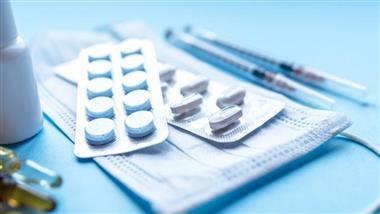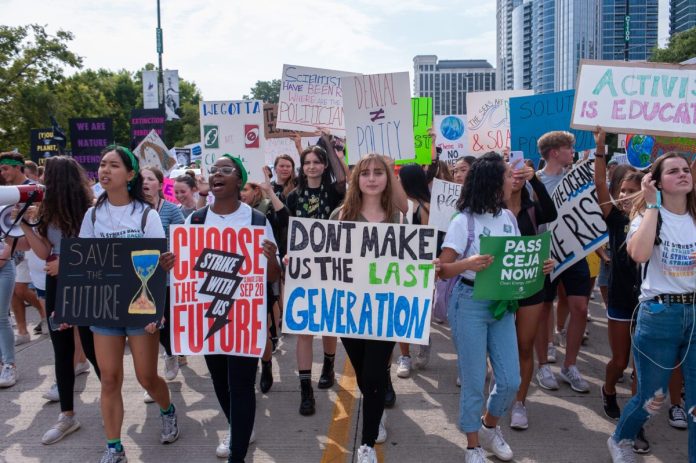“COVID-19 Pills” Cause Deadly Relapses and Supercharge Mutations. U.S. Approves Remdesevir for Babies
By Dr. Joseph MercolaGlobal Research, May 12, 2022MercolaRegion: USATheme: Science and Medicine



All Global Research articles can be read in 51 languages by activating the “Translate Website” drop down menu on the top banner of our home page (Desktop version).
To receive Global Research’s Daily Newsletter (selected articles), click here.
Visit and follow us on Instagram, Twitter and Facebook. Feel free to repost and share widely Global Research articles.
***
So far, all of the drugs developed against COVID-19 have been disastrous in one way or another. Remdesivir, which to this day is the primary COVID drug approved for use in U.S. hospitals, routinely causes severe organ damage and, often, death
Despite that, the U.S. Food and Drug Administration has approved remdesivir for in-hospital and outpatient use in children as young as 1 month old
Another COVID drug, Paxlovid, will in some cases cause the infection to rebound when the medication is withdrawn
Molnupiravir (sold under the brand name Lagevrio) also has serious safety concerns. Not only might it contribute to cancer and birth defects, it may also supercharge the rate at which the virus mutates inside the patient, resulting in newer and more resistant variants
The fact that U.S. health authorities have focused on these drugs to the exclusion of all others, including older drugs with high rates of effectiveness and superior safety profiles, sends a very disturbing message. They’ve basically become extensions of the drug industry, protecting the drug industry’s interests at the cost of public health
*
So far, all of the drugs developed against COVID-19 have been disastrous in one way or another. Remdesivir, for example, which to this day is the primary COVID drug approved for use in U.S. hospitals,1 routinely causes severe organ damage2,3,4,5 and, often, death.
Despite its horrible track record, the U.S. government actually pays hospitals a 20% upcharge for sticking to the remdesivir protocol, plus an additional bonus.6,7,8 Hospitals must also use remdesivir if they want liability protection.
Incentives like these have turned U.S. hospitals into veritable death traps, as more effective and far safer drugs are not allowed, and hospitals are essentially forced to follow the recommendations of the U.S. Centers for Disease Control and Prevention. As reported by Forbes science reporter JV Chamary back in January 2021, in an article titled, “The Strange Story of Remdesivir, a COVID Drug That Doesn’t Work”:9
“Remdesivir is an experimental drug developed by biotech company Gilead Sciences (under the brand name Veklury) in collaboration with the US Centers for Disease Control and Army Medical Research Institute of Infectious Diseases …
The drug proved ineffective against the Ebola virus … yet was still subsequently repurposed for SARS-CoV-2 coronavirus. News media prematurely reported that patients were responding to treatment.
But the published data10 later showed that ‘remdesivir was not associated with statistically significant clinical benefits [and] the numerical reduction in time to clinical improvement in those treated earlier requires confirmation in larger studies’ …What’s weird about remdesivir is that it hasn’t been held to the same standards as other drug candidates. Normally, a drug is only approved for use by a regulatory body like the U.S. Food and Drug Administration if it meets the two criteria for safety and efficacy.
Nonetheless, in October 2020, remdesivir was granted approval by FDA based on promising data from relatively small trials with about 1,000 participants. A large-scale analysis11 by the World Health Organization’s Solidarity trial consortium has cleared-up the confusion.
Based on interim results from studying more than 5,000 participants, the international study concluded that remdesivir ‘had little or no effect on hospitalized patients with COVID-19, as indicated by overall mortality, initiation of ventilation, and duration of hospital stay.’ As a consequence of being mostly ineffective, WHO recommends against the use of remdesivir in COVID-19 patients.”
Shockingly, US Approves Remdesivir for Babies
Curiously, while Big Tech — aided and abetted by the U.S. government — has spent the last two years censoring and banning any information that doesn’t jibe with the opinions of the WHO, the U.S. government has completely ignored the WHO’s recommendation against remdesivir.
In fact, in late April 2022, the FDA approved remdesivir as the first and only COVID-19 treatment for children under 12, including babies as young as 28 days,12 which seems beyond Orwellian and crazy considering it’s the worst of both worlds: It’s ineffective AND has serious side effects.
What’s worse, the drug is also approved for outpatient use in children, which is a first. In an April 30, 2022, blog post,13 Dr. Meryl Nass expressed her concerns about the FDA’s approval of remdesivir for outpatient use in babies, stating:
“Remdesivir received an early EUA (May 1, 2020) and then a very early license (October 22, 2020) despite a paucity of evidence that it actually was helpful in the hospital setting. A variety of problems can arise secondary its use, including liver inflammation, renal insufficiency and renal failure14 …
WHO recommended against the drug on November 20, 2020. Few if any other countries used it for COVID apart from the US. A large European trial15 in adults found no benefit. The investigators felt 3 deaths were due to remdesivir (0.7% of subjects who received it.) However, on April 22, 2022 the WHO recommended the drug for a new use: early outpatient therapy in patients at high risk of a poor COVID outcome.”
Remdesivir — A Reckless Choice for Children
Nass goes on to recount how monoclonal antibody treatment centers have been turned into outpatient treatment centers using remdesivir instead, but we still don’t have a lot of data on its effectiveness in early treatment. She continues:16
“The FDA just licensed Remdesivir for children as young as one month old. Both hospitalized children and outpatients may receive it. The drug might work in outpatients, but the vast majority of children have a very low risk of dying from COVID.
If 7 deaths per 1,000 result from the drug, as the European investigators thought in the study of adults cited above, it is possible it will harm or kill more children than it saves.
Shouldn’t the FDA have waited longer to see what early outpatient treatment did for older ages? Or studied a much larger group of children? Very little has been published on children and remdesivir …
When we look at the press release17 issued by Gilead, we learn the approval was based on an open label, single arm trial in 53 children, 3 of whom died (6% of these children died); 72% had an adverse event, and 21% had a serious adverse event.”
Overall, remdesivir appears to be an exceptionally risky treatment choice for young children. Certainly, there are safer early treatment protocols that are very effective. Two other COVID drugs, Paxlovid and Molnupiravir, also have serious safety concerns.
Post-Paxlovid COVID Rebound
As reported by Bloomberg,18 COVID patients treated with a five-day course of Paxlovid sometimes experience severe rebound when the medication is withdrawn.19 U.S. government researchers are now planning to study the rate and extent to which the drug is causing SARS-CoV-2 infection to rebound, and whether a longer regimen might prevent it.
Bloomberg describes the post-Paxlovid rebound of David Ho, a virologist at the Aaron Diamond AIDS Research Center at Columbia University:20
“Ho said he came down with COVID on April 6 … His doctor prescribed Paxlovid, and within days of taking it, his symptoms dissipated and tests turned negative. But 10 days after first getting sick, the symptoms returned and his tests turned positive for another two days.
Ho said he sequenced his own virus and found that both infections were from the same strain, confirming that the virus had not mutated and become resistant to Paxlovid. A second family member who also got sick around the same time also had post-Paxlovid rebound in symptoms and virus, Ho says.
‘It surprised the heck out of me,’ he said. ‘Up until that point I had not heard of such cases elsewhere.’ While the reasons for the rebound are still unclear, Ho theorizes that it may occur when a small proportion of virus-infected cells may remain viable and resume pumping out viral progeny once treatment stops.”
Clinical Director of the Division of Infectious Diseases at Brigham and Women’s Hospital, Dr. Paul Sax, told Bloomberg:21
“Providers who are going to be prescribing this should be aware that this phenomenon occurs, and if people have symptoms worsening after Paxlovid, it’s probably still COVID. The big problem is that when this drug was released, this information wasn’t included [on the label].”
Pfizer Defends Paxlovid
The U.S. Food and Drug Administration has stated it is “evaluating the reports of viral load rebound after completing Paxlovid treatment and will share recommendations if appropriate.” The U.S. Centers for Disease Control and Prevention has not yet commented on the findings.
Pfizer, meanwhile, insists the increase in viral load post-treatment “is unlikely to be related to Paxlovid” because viral rebound was found in “a small number” of both the treatment and placebo groups in Pfizer’s final-stage study.22 Clifford Lane, deputy director for clinical research at the National Institute of Allergy and Infectious Diseases (NIAID), told Bloomberg23 that some people may simply “need longer dosing of Pfizer’s drug than the standard five days.”
“There’s two things that suppress the virus: the drug and the host immune response,” he said. “If you stop the drug before the host immune response has had a chance to kick in, you may see the virus come back.”
Molnupiravir Supercharges Viral Mutation
Molnupiravir (sold under the brand name Lagevrio) also has serious safety concerns. This drug was developed by Merck and Ridgeback Therapeutics and approved for emergency use by the FDA December 23, 2021, for high-risk patients with mild to moderate COVID symptoms.
However, not only might it contribute to cancer and birth defects, it may also supercharge the rate at which the virus mutates inside the patient, resulting in newer and more resistant variants.24 As reported in November 2021 by Forbes contributor and former professor at Harvard Medical School, William Haseltine, Ph.D.:25
“… I believe the FDA needs to tread very carefully with molnupiravir, the antiviral currently before them for approval. My misgivings are founded on two key concerns.
The first is the drug’s potential mutagenicity, and the possibility that its use could lead to birth defects or cancerous tumors. The second is a danger that is far greater and potentially far deadlier: the drug’s potential to supercharge SARS-CoV-2 mutations and unleash a more virulent variant upon the world …
My concern with molnupiravir is because of the mechanism26 by which this particular drug works. Molnupiravir works as an antiviral by tricking the virus into using the drug for replication, then inserting errors into the virus’ genetic code once replication is underway. When enough copying errors occur, the virus is essentially killed off, unable to replicate any further …
But my biggest concern with this drug is … molnupiravir’s ability to introduce mutations to the virus itself that are significant enough to change how the virus functions, but not so powerful as to stop it from replicating and becoming the next dominant variant.”
Haseltine cites prepandemic experiments showing MERS-CoV and the mouse hepatitis virus (MHV) both developed resistance against the drug, thanks to mutations that occurred. While the central idea behind the drug is that the genetic errors will eventually kill the virus, these experiments showed the viruses were in fact able to survive and replicate to high titers despite having large numbers of mutations throughout their genomes.
The drug did slow down replication, but as noted by Haseltine, “outside of the lab, as the drug is given to millions of people with active infections, this disadvantage may quickly disappear as we would likely provide a prime selection environment to improve the fitness of the virus.” This risk may be particularly high if you fail to take all the prescribed doses (typically 800 milligrams twice a day for five days).
Experts Question Usefulness of Molnupiravir
More recently, in a January 10, 2022, article, Newsweek cited concerns by professor Michael Lin of Stanford University:27
“’I am very concerned about the potential consequences now that molnupiravir has been approved … It would only be a matter of time, perhaps a very short time, before a lucky set of mutations occurs to create a variant that is more transmissible or immunoevasive …
The drug simply speeds up that natural process. The hope is that over enough days all the viral copies will have so many mutations that none of the copies can function.’ But Lin said he was concerned that in the real world, there is a possibility that a mutated virus could jump from a patient taking molnupiravir to another individual, citing the relatively modest efficacy of the drug.
‘For cases that get worse so that people have to go to the hospital, this drug only prevents that from happening 30%of the time. That means 70% of the time the virus isn’t being eliminated quickly enough to make a difference. And we know COVID patients going to hospitals are highly contagious.’
Lin said the risks could be heightened when a patient does not comply exactly with the dosing schedule of the drug … ‘In any of those situations viruses will have picked up some mutations but not enough to kill all the virus copies,’ he said. ‘The survivors are now mutated, perhaps have picked up immunoevasion, and can go on to infect others’ …
According to Lin, the ‘very low efficacy alone’ should have disqualified the drug from approval … ‘Even if the drug were great we wouldn’t take such a risk, but this drug is worse than any other drug that’s sought approval for COVID-19. It’s completely not worth it.’”
Haseltine also told Newsweek28 that, “Of all the antiviral drugs I have ever seen, this is by far the most potentially dangerous,” and “The more people that take it, the more dangerous it will be.”Even if the probability is very low, 1 in 10,000 or 100,000, that this drug would induce an escape mutant which the vaccines we have do not cover, that would be catastrophic for the whole world. ~ James Hildreth, president of Meharry Medical College
One of the FDA panel members who actually voted against the approval of molnupiravir, James Hildreth, president of Meharry Medical College in Tennessee, wanted Merck to do a better job of quantifying the risk of mutations before approval. During the panel meeting, he noted that:29
“Even if the probability is very low, 1 in 10,000 or 100,000, that this drug would induce an escape mutant which the vaccines we have do not cover, that would be catastrophic for the whole world.”
Government Has Sold Out to Big Pharma
Widespread use of a drug that turbocharges mutation of an already rapidly mutating virus probably isn’t the wisest strategy. Likewise, using drugs that cause high rates of organ failure, like remdesivir, and drugs that causes the virus to rebound with a vengeance, like Paxlovid, don’t seem to be in the best interest of public health either.
The fact that U.S. health authorities have focused on these drugs to the exclusion of all others, including older drugs with high rates of effectiveness and superior safety profiles, sends a very disturbing message.
They’ve basically become extensions of the drug industry and have abandoned their original purpose, which is to protect public health — by ensuring the safety and efficacy of drugs, in the case of the FDA,30 and by conducting critical science and data analysis in the case of the CDC.31
Instead, they seem to be doing everything they can to protect Big Pharma profits, even if it costs you your life. Remdesivir, for example, is an extremely expensive drug, costing between $2,340 and $3,120 depending on your insurance.32
Ivermectin, meanwhile — which has been very effective against COVID and shown to outperform at least 10 other drugs, including Paxlovid33 — costs between $4834 and $9435 for 20 pills depending on your location. The average cost is said to be about $58 per treatment.36
Paxlovid costs $529 per five-day course of treatment,37 and molnupiravir is around $700.38 While not quite as expensive as remdesivir, both are still nearly 10 times costlier than ivermectin, which is more effective. Paxlovid alone has cost U.S. taxpayers $5.29 billion. Just imagine the billions we could have saved had we saner leadership.
Since the FDA and CDC cannot be trusted, it’s imperative to take responsibility for your own health. Do your own research and follow your own conscience and conviction. Remember, when it comes to COVID-19, early treatment is crucial, and effective protocols are readily available — just not from the FDA, CDC or even most hospitals.
*
Note to readers: Please click the share buttons above or below. Follow us on Instagram, Twitter and Facebook. Feel free to repost and share widely Global Research articles.
Featured image is from MercolaThe original source of this article is MercolaCopyright © Dr. Joseph Mercola, Mercola, 2022
Related posts:
Views: 0
 RSS Feed
RSS Feed

















 May 16th, 2022
May 16th, 2022  Awake Goy
Awake Goy 




 Posted in
Posted in  Tags:
Tags: 
















